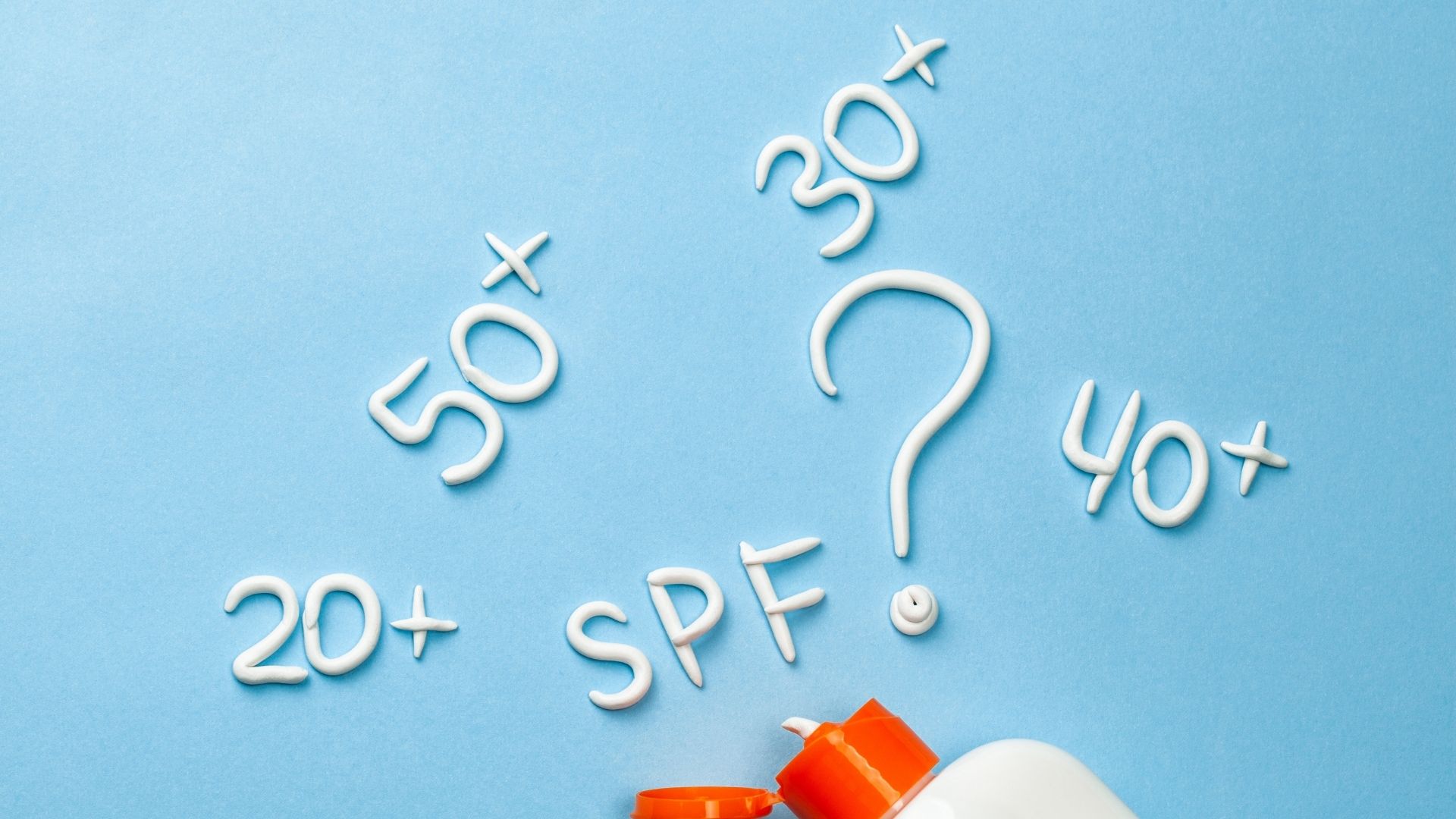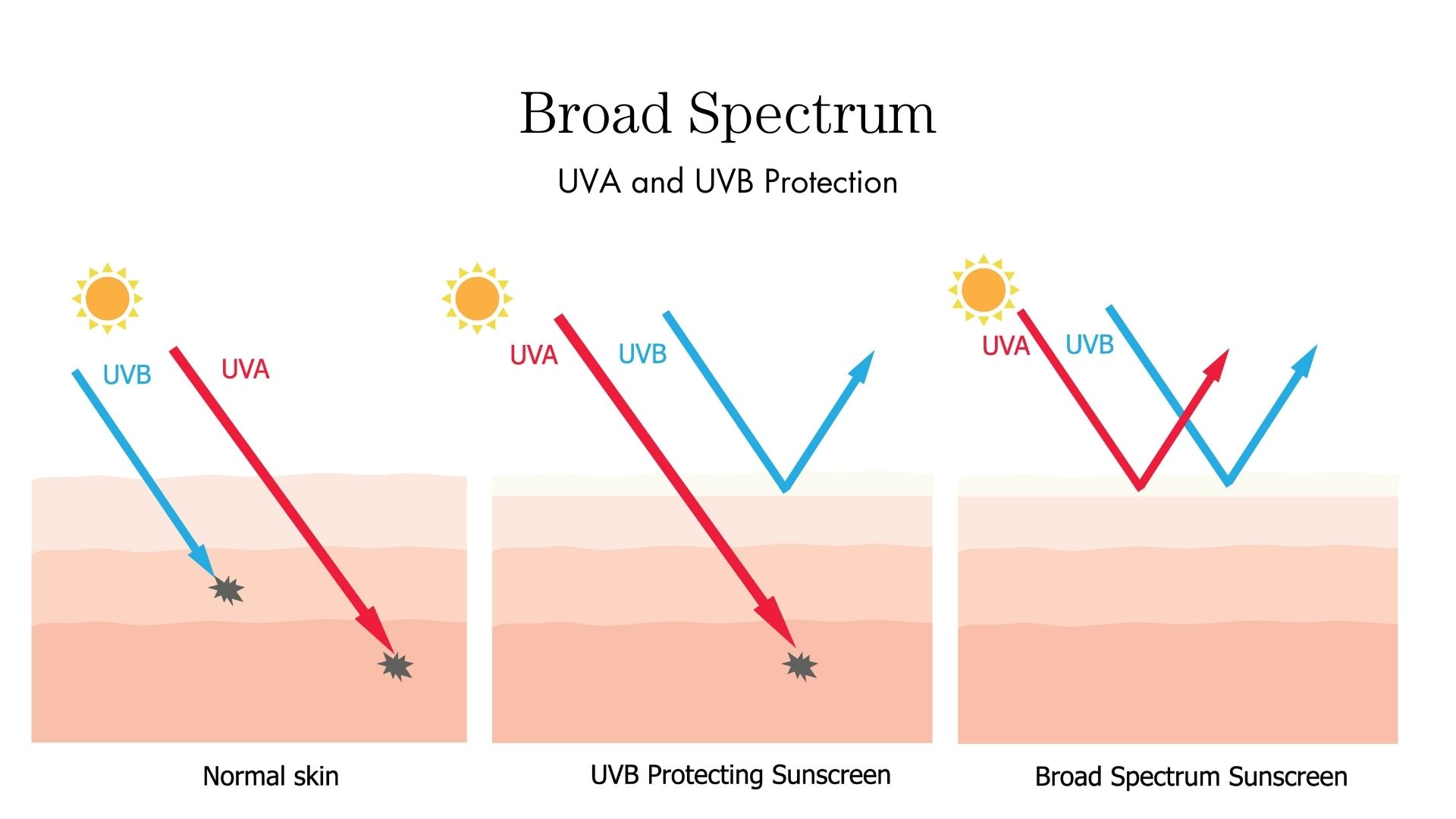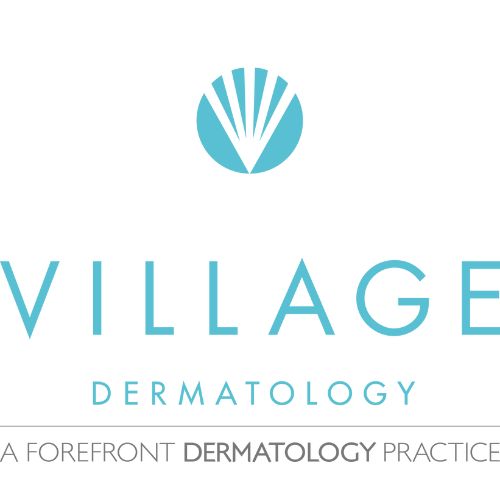Sunscreen Protection Factor (SPF) 101
You probably know that sunscreen is a critical part of your daily skincare routine. Wearing sunscreen can protect you from sunburn, skin cancer, wrinkles, age spots, and other signs of premature skin aging.
Yet, with thousands of sunscreens available on the market, it can be overwhelming to figure out which sunscreen will give your skin the best protection. In this article, we’re going to decode one of the most common terms used on sunscreen labels – SPF.

What is SPF?
SPF (sun protection factor) is a measure of how well a sunscreen product protects your skin from sunburn. It is usually followed by a number, such as SPF 15 or SPF 100.
However, these labels are often misunderstood by the average consumer as they do not account for time. For example, if your skin normally burns when out in the sun at 5 minutes, then sunscreen with an SPF of 15 would allow you to remain in the sun for approximately 75 minutes, which is a factor of 15 times (SPF 15) your baseline, before getting burned.
Secondly, SPF is also a measure of how effective the sunscreen product is at blocking all of the UVB rays from the sun. This number tells you how much of the sun’s UVB rays the sunscreen can filter out.
- SPF 15 blocks 93% of the sun’s UVB rays
- SPF 30 blocks 97% of the sun’s UVB rays
- SPF 50 blocks 98% of the sun’s UVB rays
- SPF 100 blocks 99% of the sun’s UVB rays
As you can see, no sunscreen offers 100% protection. Also, there’s only a marginal difference between the various SPF values beyond SPF 30.
So, in our example above, if an individual uses a sunscreen product with SPF 15, then they would have protection against roughly 93% of the sun’s UVB rays for approximately 75 minutes.
But here’s the thing. You need to reapply the sunscreen every 2 hours for it to continue working.
What is a broad-spectrum sunscreen?
Another term that you frequently hear when talking about sunscreens is “broad spectrum.” What does it mean?
Sunlight contains two types of harmful rays – UVA rays that cause skin aging and skin cancer and UVB rays that cause sunburns. A broad-spectrum sunscreen protects your skin against both UVA and UVB rays, thereby offering more complete protection.

What SPF should I use?
The American Academic of Dermatology recommends everyone should wear sunscreen with SPF 30 or more every day.
Keep in mind that factors besides the duration of sun exposure also play a role in how soon your skin burns. For example, 30 minutes of sun exposure at 9 am may be equal to just 10 minutes of sun exposure at 3 pm when the sun is high in the sky.
That’s why you shouldn’t rely solely on the SPF number. The effectiveness of your sunscreen will depend on other things like your skin type, how much sunscreen you apply, how frequently you reapply sunscreen, and activities (swimming or sweating can wash off your sunscreen).
I use a high SPF sunscreen – do I need to do anything else to protect my skin?
As mentioned, no sunscreen can completely protect your skin from sunburn, aging, and skin cancer. That’s why it’s important to take other measures such as wearing protective clothing (wide-brimmed hats, sunglasses, long sleeves, pants), staying in the shade as much as possible, and staying out of the sun between 10 am and 4 pm when the sun is strongest.
Also, remember that 80% of the sun’s rays can pass through clouds, so you should wear sunscreen even on cloudy days. You also need to wear sunscreen when you’re indoors or in a car because UV rays can pass through glass windows.
Frequently Asked Questions About SPF
Is it better to use SPF 30 or 50? And is SPF 50 or 100 better?
In general, a higher SPF number indicates greater sun protection. But anything beyond SPF 30 makes very little difference. The more important thing is to wear sunscreen every day and to wear it correctly.
Is SPF 15 better than nothing?
A sunscreen that’s labeled SPF 15 blocks 93% of the sun’s UV rays, so yes, it’s better than nothing. However, it’s preferable to wear SPF 30 sunscreen, which offers 97% protection.
Is SPF 30 enough for the beach?
When you’re going to be outdoors all day, such as at a beach, swimming pool, park, or on a hike, SPF 30 is the minimum. Remember to reapply the sunscreen every 2 hours, more frequently if you are in water or sweating.
Can you get a tan with SPF 50?
No sunscreen is 100 percent effective. As noted above, SPF 30 sunscreen blocks 97 percent of the sun’s UVB rays, so 3 percent of these rays can still penetrate your skin. That’s why you can still get tanned while wearing sunscreen.
Interested in learning about our favorite sunscreens?
Check out our article “5 best sunscreens for every skin type.”
As always, we are here to help! If you have any additional questions about this article or any of the sunscreens products we sell, don’t hesitate to reach out to our Skin for Life Boutique for answers to your questions.

